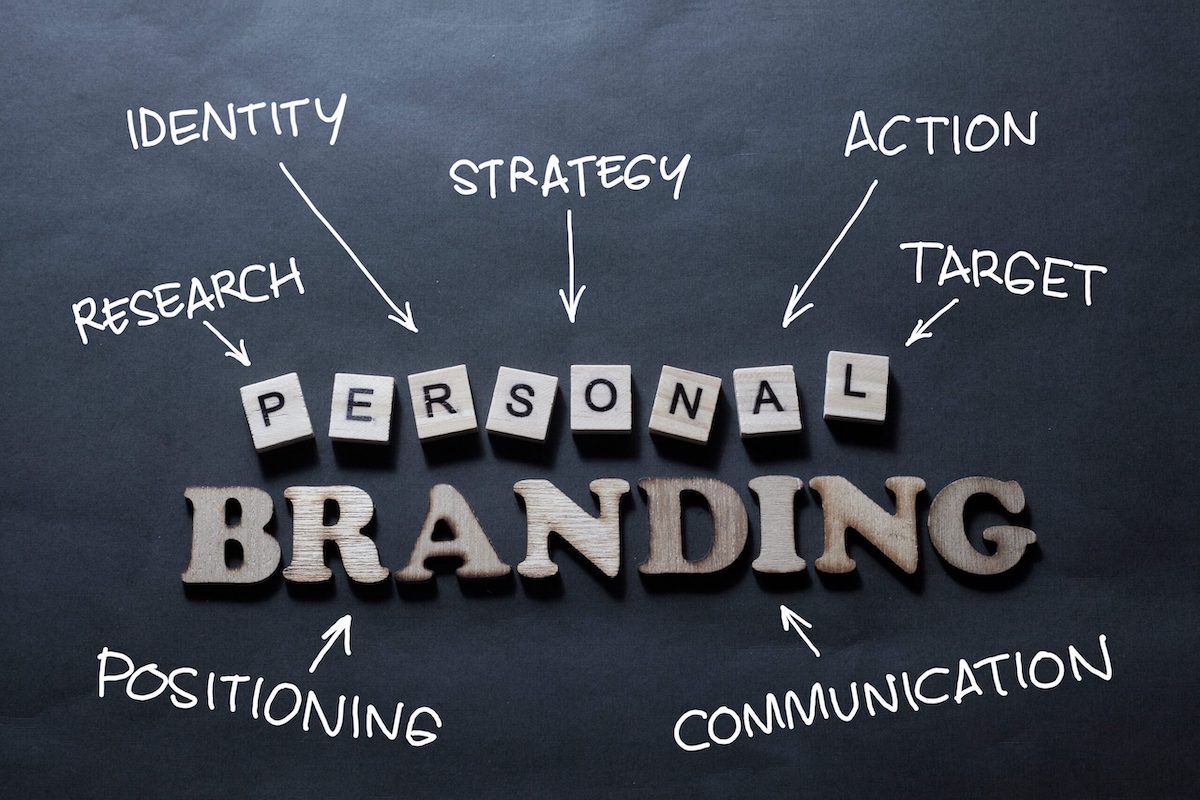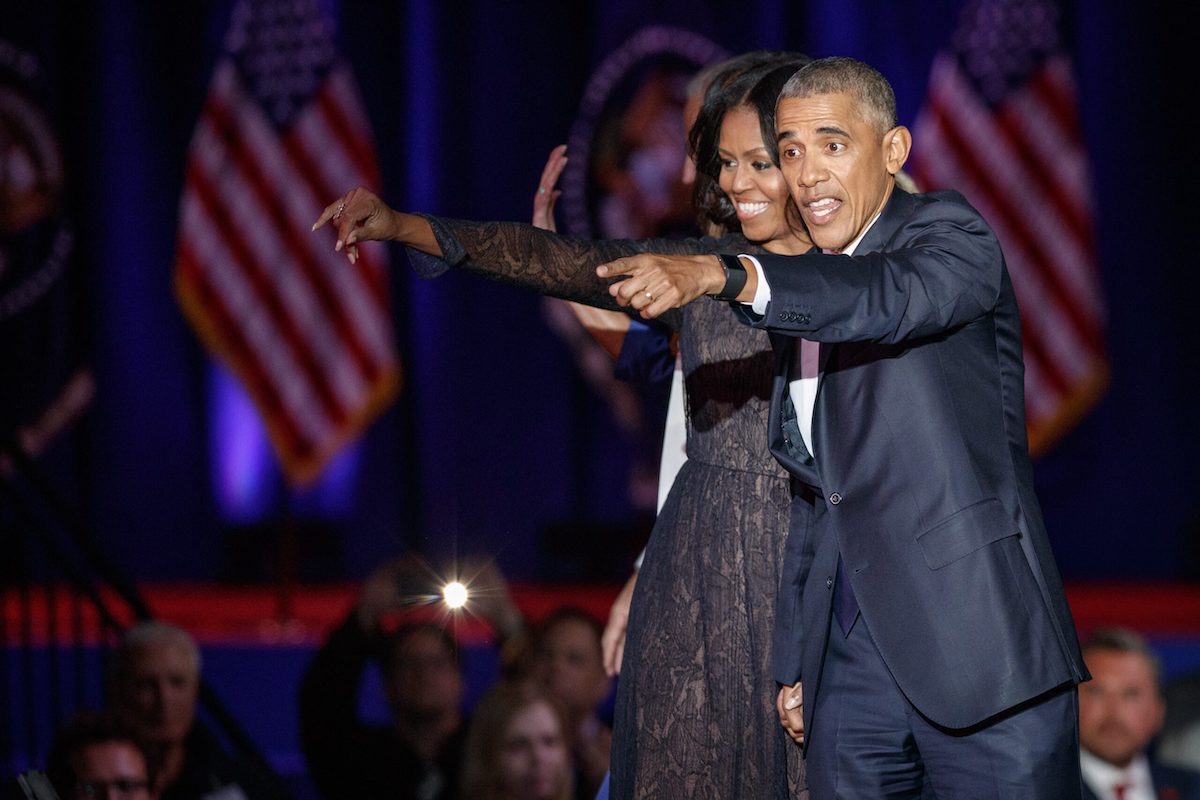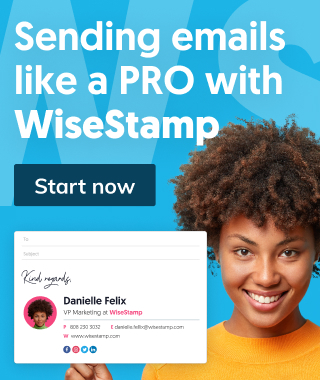Branding for women: 4 inspiring examples by successful female entrepreneurs
Learn how to brand yourself as a lady or promote your female-targeted brand by looking at powerful personal branding for women, including women of color.

Personal branding for women is quite the buzz-phrase these days. But at its heart, personal branding is nothing new.
Personal branding for female entrepreneurs begins with storytelling, sharing a story that’s all the better when it’s genuine, and building emotional connections.
But if the ultimate goal of personal branding for female entrepreneurs is to sell products, services, or ideas, how does storytelling support profitability?
Keep reading.
Powerful personal branding strategies for women
If you’re a branding coach for female entrepreneurs or simply seeking strategies to define and brand yourself, below are 8 tactics to help you build your personal branding strategy followed by inspiring examples of uber-successful branding for women, so you can DO rather than READ.

1. Story and differentiation
Sharing personal anecdotes or your origin story is a form of differentiation that establishes your brand and distinguishes you from the competition. You have a unique life story. Your background and quirks provide context, drama, and a channel for audience engagement and connection.
Branding is storytelling
In 2009, Rob Walker and Joshua Glenn conducted an as Significant Objects. They hired well-known fiction writers to create stories about thrift store objects. Then paired the fictional stories with the objects and sold them on eBay. Potential buyers understood that these stories were fictional, but it didn’t matter. The stories sold.
The financial value of these objects increased significantly when attached to a story, demonstrating how narrative undeniably affects an object’s value (both emotionally and financially) — even when the story is not factual.
How much more do we value people when we know and connect to their true stories?
Where did you come from? What’s important to you? What are your values, your belief systems, and your style? Reveal who you are.
2. What is your “core value?”
Your story must transcend its plot.
For example, Simon Sinek speaks at length about inspired leadership and knowing your “why.” Why are you driven to get out of bed every morning? It’s not for the paycheck; you can do that by working hourly at the grocery store. For your potential audience to connect, you have to dig deeper. Your why must answer an emotional human need.
3. What’s your one singular message?
Distill your core value into a message. When your name comes up in conversation, what do people think? Your personal branding message should be simple and easy to recall.
Sara Blakely, the founder of Spanx, conjured a message that resonated with her and all of her potential customers — stand out and be brave.
“I pledge to invest in women because I believe it offers one of the greatest returns on investment.” Her entire brand is driven by this statement, and we feel it. Even when we’re wearing Spanx and can’t breathe.
4. Find your audience
Before you can share your brand message, you need to deeply understand the audience you’re talking to. Where do they hang out (Instagram? LinkedIn? The local Gymboree?) What are their pain points? (Do they feel inadequate? Uninspired? Unhealthy?) And the critical question: how can you solve their problem?
When you have a clearly defined buyer persona, you will know what to say, how to dress, and how to reach your prospects in their language.
5. Build trust and authority through thought leadership
You should be your prospect’s number one resource. Write articles, create videos, provide valuable information. And do it better than your competition. Just be consistent about the channels you communicate in and always respond to your customers and anyone else interacting with you.
Most importantly, your thought leadership should be based on research and facts when applicable. Fluff will not win you long-term followers.
6. Radiate passion and confidence
Don’t be afraid to express with passion what you believe in and what you have to offer. It’s okay if your approach and your belief system do not appeal to every crowd. As marketing guru, Seth Godin says, based on Kevin Kelly’s 2008 essay — start with 1000 true fans. These are people with whom your message resonates.
7. Use design to represent your brand
Repeated exposure to colors, images, and different online design elements like a personal brand logo, email signature as well as your personal visual style, will build a sensory connection for your audience. Memory recall is strengthened by consistent and ongoing exposure to visual elements. But remember, symbols and fashion are meaningless without a personal brand story (for context and meaning).
8. Networking
Digital marketer Neil Patel encourages entrepreneurs to build strategic partnerships with influencers. Network with other female founders and business associations. You’ll be pleasantly surprised at how eager successful women are to help others join the ranks.
Start with the first seven steps. Then, add #8.
4 inspiring examples of personal branding for female entrepreneurs
The following women represent just a small sampling of the many female entrepreneurs who have used the techniques above to brand themselves and build a substantial (and profitable) following.
1. Oprah Winfrey

How she became famous
Oprah is a self-made billionaire. With her rags to riches story and her outstanding extemporaneous language skills, she was able to connect to many different types of people during her 25-years as a talk show host. Now as a businesswoman and media giant, she continues to share her message and grow her empire.
Tactics and strategies that helped her brand become effective
Her emotion-centered approach to communicating with her guests and her audience made her relatable. She repeatedly shared personal stories not only to connect to her audience but to help them as well. She expressed vulnerability and covered sensitive topics like weight loss, spousal abuse, divorce, and death.
What makes Oprah so beloved is her authenticity (read about it in her own words):
“ I actively work to make sure everything I do, say, promote or involve myself from a place of resonance and appreciation. All my personal and business endeavors have to be in alignment with what’s authentically me.”
Her investment in Weight Watchers is one example of how her work is an authentic extension of herself.
“Using food to improve your life through Weight Watchers … feel[s] like an extension of me. As is everything I do.”
Oprah’s personal branding message
Oprah’s message has always been clear: “To be authentically you and to help others through the power of stories, inspiration, and giving.
How to Oprah-icize your own personal branding
Remain true to your brand message in all walks of life: Being authentic means that your “on stage” presentation is no different from your “backstage” behavior. By being consistent in both areas of your life, you enable your audience to trust you and your value system and you become a beloved role model.
Being authentic just means being truthful, and sometimes even being vulnerable in the public eye. Real people experience pain and moments of fragility. When your prospects see you as real, they are more willing to engage with you and your brand.
2. Michelle Obama

How she became famous
While Michelle Obama only became famous as the wife of the 44th American President, her education and accomplishments were already exceptional.
Her intelligence, advocacy on behalf of others, and powerful speeches made her stand out as a woman of substance. She quickly became an international role model for women of all ages.
Michelle Obama is not new to the limelight and has been publicly active since Barack Obama’s first presidential campaign in 2007. Around that time she began building her personal brand around womanhood, motherhood, and family.
Her successful self-branding made her a highly influential personality with an immense following around the world. It put her in a position to initiate social change initiatives, help charities and spur political issues.
Her outrageous popularity is exemplified by her autobiographical book Becoming, which had instant success. It sold 2 million copies within 2 weeks of publication, and has, by now, sold over 14 million copies worldwide.

Tactics and strategies that helped her brand become effective
During Barack Obama’s first presidential campaign Michelle Obama was labeled by fox news as being an “angry black woman” and unpatriotic. Surprisingly, what seemed to be her strong suits were used against her.
Her impressive resume as a highly educated woman of color, as well as her assertive and opinionated nature (having written her senior year thesis at Princeton University on racial divide) was used to make her look unrelatable. An Obama family friend advised that she “must stop sounding like a lawyer trying to win an argument” and focus on relating to people instead.
After the criticism, Michelle Obama started focusing more on media outlets for women. She gave interviews to Oprah Winfrey, Barbara Walters, and Ellen DeGeneres; all of them talk shows that cater to a female audience.
She also changed her dressing style from formal “Lawyer like” attire to more casual and stylish clothes. This gradually built her brand as a family woman with a great fashion sense, earning her the nickname “Mom in Chief” and positioning her as a fashion trendsetter.
Let’s break down what she did to brand herself.
Michelle Obama used 3 personal branding tactics that you can learn from:
1. Find your audience
Michelle Obama may have naturally based her initial personal brand on her academic achievements and strong personality. This set her target audience as strong-minded, ambitious, and individualistic women.
But it turns out that this audience was unresponsive. She then changed her target audience to “working family-women”, and used other aspects of her personality to connect with the concerns and values of her new audience. This change worked and turned her into one of the most popular women in America. She had found her audience.
You can do the same if you recognize that your audience is not what you initially think it is. We are all complicated, and multi-layered personalities. The biggest thing you have to offer to others may be an aspect of your personality you yourself may not think is exceptional, but others do.
2. Express your core values
What allowed Michelle Obama to become popular with her new found audience was her change in message. Her new message centered on the values of family life and livelihood. Instead of talking about race or ideology she began talking about family life, personal hardships, and her humble beginnings.
You may think that she changed big values for small ones, but in actuality, this earned her a following and the ability to make a much greater positive impact on people’s lives.
For example, in 2012, to advocate for healthier eating, she published a book. The book, American Grown: The Story of the White House Kitchen Garden and Gardens Across America, shared her experience creating a vegetable garden as well as the work of community gardens around the country. To educate young children about health, she made a guest appearance on Sesame Street. To promote exercise, she shared a video of herself exercise on YouTube. She reached her audiences where they already were.
You can do the same if you find your values that are also the most important to your target audience and build your message around them.
3. Pivot
The adjustment in personal branding Michelle Obama made from the “Brutally honest Harvard lawyer” to “Mom in Chief” is called a “Pivot” in business terms.
This Pivot worked out gloriously for Michelle Obama’s brand and earned her a place in lucrative lists like Gallup’s “most admired woman” in America, and Time magazine’s “Person of the Year”. All this allowed her to voice her message and values to millions of women thirsty to hear her opinion.
You can do the same if you stay open-minded, keep your ear to the ground, and take the opportunity to pivot your brand to the direction it’s most appreciated and least vulnerable to criticism. You don’t need to commit all at once. Instead, test your new message on your target audience, listen to criticism, and correct.
Michelle’s personal branding message
Michelle Obama stated: “Never view your challenges as obstacles.”
As a Black woman raised on the south side of Chicago, she proved just how her own personal story exemplifies her message. She uses this message as a foundation for all the different campaigns she advocates for like health, education, and women’s issues.
How to Michelle-icize your own personal branding
Like Michelle Obama, don’t be afraid to relate to people wherever they’re at (their channels, their emotional state) in order to connect with them on important topics. She knows where her audience is and meets them there, including social media, television, YouTube, in schools, at forums, in books, and at conferences.
3. Alexandria Ocasio-Cortez

How she became famous
Alexandria Ocasio-Cortez shot to fame by becoming the youngest woman ever to serve in the U.S. House of Representatives. While beloved by some on the left, she is often villainized by the right. Given her potentially extreme views, she has engaged a whole new generation of those seeking to make changes.
Tactics and strategies that helped her brand become effective
Ocasio-Cortez’s origin story is very much a part of her branding narrative. She is often described as a former bartender who lived paycheck to paycheck before launching her career as a politician. Her mother was a house cleaner and her father ran a small architectural firm.
When they moved to a more prosperous neighborhood, Ocasio-Cortez learned about opportunity. But her earlier narrative serves her well as she fights for more progressive policies.
Ocasio-Cortez has also used visual branding techniques to stand out from other politicians. Her original campaign graphics made a break from the typical political brand approaches. She used purple and yellow rather than the usual red and blue, employed all-caps, and featured a profile shot of herself. So distinct was her style that others quickly copied her.
Her personal branding message
Technically, Ms. Ocasio-Ortez is a Democratic socialist. With her stronger, more progressive views, she does not have mass appeal, but has built a strong, loyal tribe, nevertheless, and has risen to fame as a result.

How to Alexandria-icize your own personal branding
Tell your story: Speaking passionately about what you stand for, and how it connects to your personal life experience is what will make you stand apart from the rest. Using visual branding, especially for entrepreneurs on social media, can also help you differentiate yourself from others (as long as you have a strong message behind the visuals).
4. Greta Thunberg

How she became famous
Greta is an environmental activist. As a Swedish teenager, she rose to fame with her slogans, “School Strike for Climate” and “#Fridaysforfuture.” She encouraged her followers to go on strike every Friday outside their local town hall to protest on behalf of the environment.
Tactics and strategies that helped her brand become effective
Greta’s single-minded passion for the environment and her one focused message about the dangers of climate change make her memorable.
She was very clear about her audience (teenagers) and targeted them through her campaigns. Ultimately, her audience has grown beyond teenagers and she has spoken before the United States Congress and other international forums.
Her personal branding message
Greta is all about the WHY. She taps into the human survival instinct. Save the planet from the ill effects of climate change to preserve future generations.
Her lifestyle is consistent with her message. She doesn’t fly on airplanes, due to their carbon footprint, and follows a vegan diet. Her youthful idealism appeals to teenagers and proves that age does not have to determine your ability to impact the world.

How to Greta-icize your own personal branding
Be confident, passionate, and consistent in communicating your core value. Act in accordance with that belief system, and your audience will trust you as a result. Her unwavering ability to stick to her core message makes her a memorable and influential activist even at such a young age.
Branding for women: takeaways
Use personal branding verticals like social media, blog posts, podcasts, video content, and online education to share your core message and value system with your audience. By focusing on authentic storytelling both “on and offstage,” you’ll increase your personal brand value and win the hearts of your 1000 true fans (and maybe even more).


